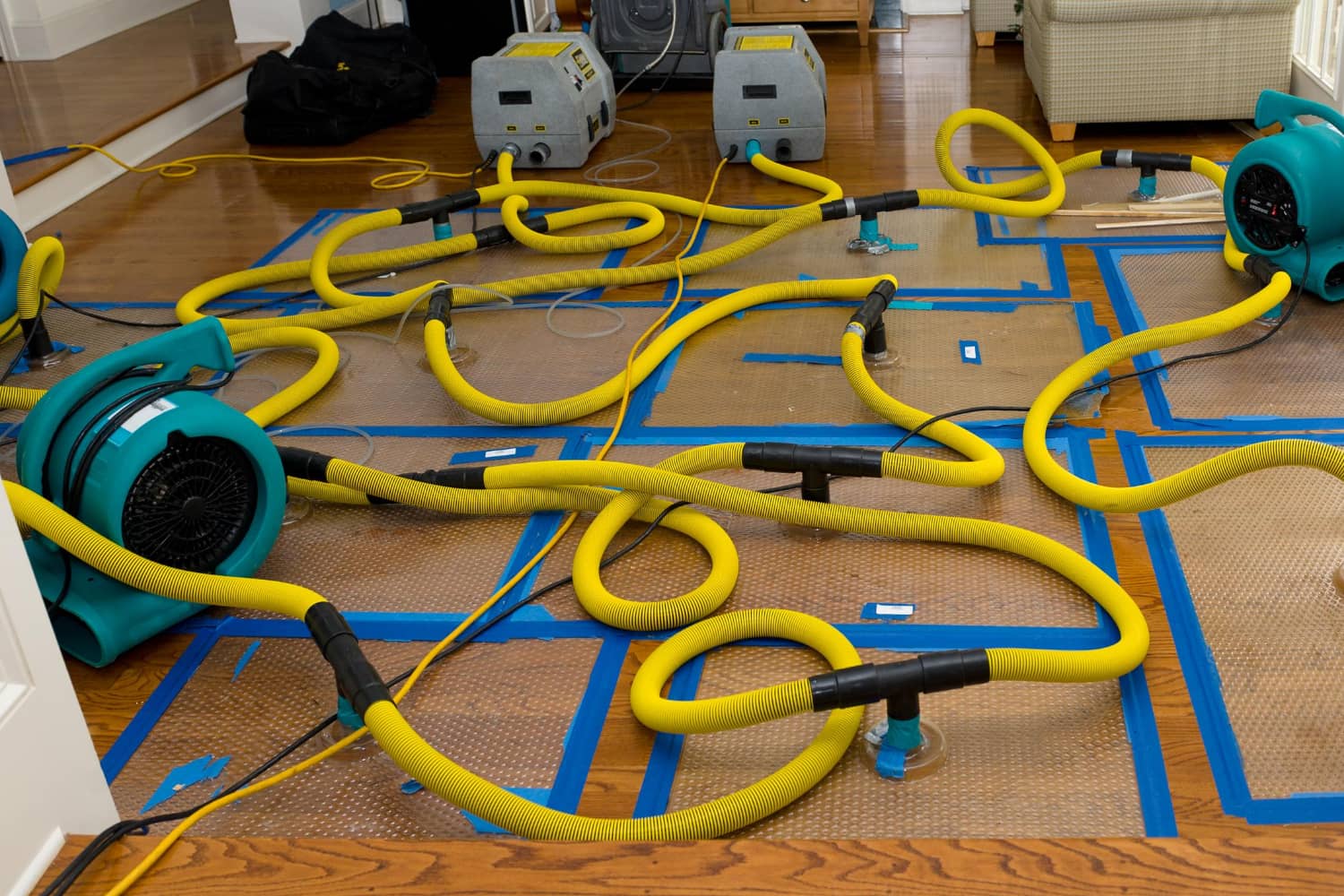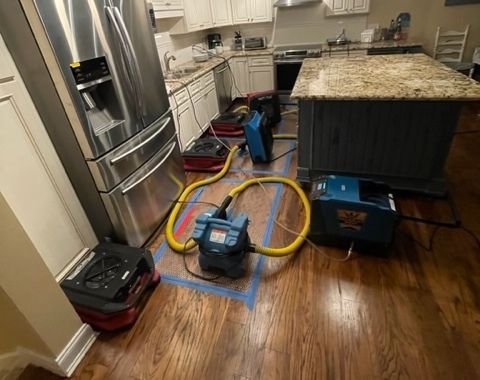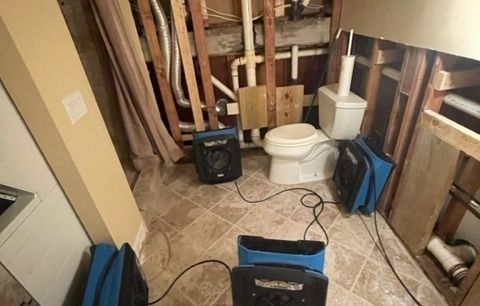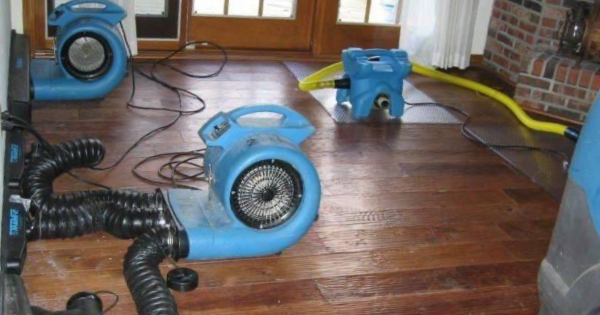
How To Dry Out Your Basement Fast After A Flood
April 4, 2022
It is imperative to dry out your basement as soon as flooding occurs to prevent mold growth and further or irreparable damage.
If you have a wet basement and want to safely reclaim your space in the shortest period possible, keep reading. We have detailed how to dry out a basement after flooding with valuable step-by-step tips that are simple and affordable.
How to Dry Out A Basement After Flooding: 8 Actionable Steps
1. Shut Off the Power Supply
The first step in drying out your basement is to turn off the power at the electrical panel or breaker box. This ensures that the chances of electrocution or an electrical fire due to standing water near an electrical source are minimal.
If you don’t know how to shut off your electricity, call a qualified residential electrician to assist you. Navigate the dark basement space with battery-operated flashlights to avoid getting injured.
2. Identify and Stop the Source of Water Flooding
The next step in how to dry out a basement fast is to locate and immediately stop the source of flooding.
If the water is clear and clean, the source of the flooding is most probably the kitchen sink or broken water supply line. However, if you notice greywater, it could be coming from an indoor appliance runoff. Turn off the main water valve to stop the flooding.
The most difficult type of flooding to stop is smelly black water. This indicates that wastewater from a toilet, sewage backflow, or chemical spillage has caused the flooding.
Call in professional plumbers to assist you in dealing with this type of water damage.
3. Begin the Water Removal Process
Now you can safely begin to remove the water on your basement floor. If the water is less than two inches deep, mop it up using a hand-held mop and towels, and wring out the excess water into a bucket.
If the water is more than two inches deep, suck up the water using a wet-dry vacuum and empty the canister as the water fills up. If the water is significantly more than two inches deep, you may need a battery-powered sump pump from a power tool supply or rental company to remove the last few remaining inches of water.
4. Remove Waterlogged Items from the Basement
After removing all standing water from your basement, you can now remove any waterlogged items and dry them in the open air or a well-ventilated area for at least 48 hours.
You should discard any items that have not dried up after 48 hours due to the risk of mold or mildew damage. You can place water-damaged documents in your freezer to stop mold growth and then dry them out in the sun or by using a blow dryer.
5. Set Up Drying Fans in the Basement
Setting up high-powered fans in your basement in strategic places will help to clear out any lingering moisture in the floor, walls, and air. Set the fans up near windows and doors to blow the air outwards.
You can buy or rent these high-powered fans from a home improvement center or power tool supplier.
6. Use a Dehumidifier to Remove Leftover Moisture
Set up your dehumidifier within 48 hours of the water damage occurring to limit the chances of mold growth. Place your device 6 to 8 inches from the basement walls and run constantly for 48 hours to remove leftover moisture in the floors and walls.
7. Run Your AC Constantly to Dry the Air Inside Your Home
Run your AC for at least 48 to 72 hours to ensure a thorough drying process. However, you should not use your AC if your home’s HVAC system gets flooded as there is a risk of spreading mold, mildew, and other airborne contaminants throughout your home via the air ducts.
8. Carry Out a Final Clean of Your Basement
The final step in how to dry out a basement after flooding is to carry out a final and thorough clean of the previously damaged space.
This process includes:
- Shoveling surface mud from the basement floor
- Removing grime, dirt, mud, or other debris by hand from clogged basement drainage
- Removing and replacing damaged insulation, carpet, or drywall
- Washing masonry and concrete walls with a high-pressure hose
- Scrubbing and cleaning concrete and masonry walls with 3/4 cup-to-1-gallon-water chlorine solution
Remember to wear protective wear such as sturdy gloves, an N95 respirator, eyewear, boots, and a PPE suit for your safety.
Get a Free Quote for Reliable and Quick Basement Restoration Today!
We hope this information on how to dry out a basement fast has given you valuable insight into the process.
If you’ve recently suffered a flooded basement and need help with its restoration, the
water damage restoration experts at DRYOUTpro PLUS, INC. are ready to assist. We will help you with the full repair, repainting, and carpeting of damaged walls and floors, respectively.
Contact DRYOUTpro PLUS, INC. today for a free basement restoration quote.





